In Which We Discuss a Variety of Fascinating Eclipse Related Facts for Your Reading Pleasure
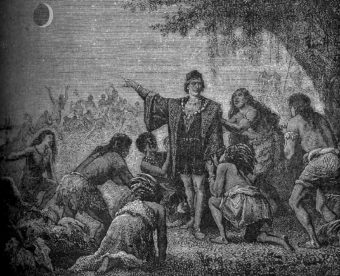 Columbus and the Lunar Eclipse
Columbus and the Lunar Eclipse
After initially welcoming Christopher Columbus and his crew to Jamaica and supplying them with food and supplies after he became shipwrecked in 1503, the Arawak Indians grew weary of Columbus’ men robbing and cheating them and subsequently halted all trade with their island guests
Without a significant source of food or means to leave, Columbus’ expedition was in serious trouble. Luckily for his crew, he had certain astronomical tables with him, including the Ephemeris compiled by the German astronomer Johannes Müller von Königsberg, better known today by his Latin name, Regiomontanus. In this almanac, Regiomontanus predicted there would be a total lunar eclipse on March 1, 1504. (For Columbus beginning on February 29, 1504 in the Americas.) He also gave an estimation of what time it would occur, though this start time was based on Nuremberg, Germany time, so Columbus had to do a bit of guesstimating. Regiomontanus even included fairly accurate information as to how long the eclipse would last.
Armed with this knowledge, which Columbus was choosing to gamble would be extremely accurate, he called a meeting with the chiefs of the nearby tribes shortly before the eclipse was to take place. In this meeting, he told them his god was angry with them for ceasing to give him supplies. As a result, his god would take away the moon as a sign of his anger and subsequently punish them for their actions.
Luckily for Columbus, the predicted lunar eclipse took place more or less on schedule and, according to Columbus’ son, Ferdinand, who was 13 and had made the voyage with his father:
The Indians observed this [the eclipse] and were so astonished and frightened that with great howling and lamentation they came running from every direction to the ships, laden with provisions, praying the Admiral to intercede by all means with God on their behalf; that he might not visit his wrath upon them… and promising they would diligently supply all their needs in the future.
Columbus agreed to take their case before his god and went into his cabin to “pray”. What he actually did in there was watch an hour glass and use the time to attempt to calculate his longitude, which the lunar eclipse facilitated. (Though he would inexplicably be wildly incorrect on the figure he came up with.)
In any event, Columbus knew the moon would stay completely in the Earth’s shadow for around 48 minutes. Shortly before it would begin to emerge, he came back out and told the natives that he had asked his god to forgive them and god had acquiesced so long as the natives continued to cooperate with him. The moon began to reappear and Columbus no longer had trouble getting the provisions he needed. He and his crew were picked up a few months later when a ship from Hispaniola arrived in Jamaica on June 29, 1504.
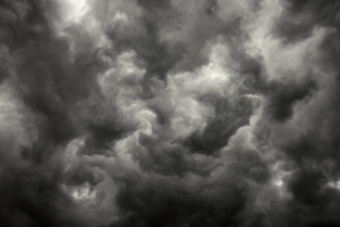 Always an Eclipsemaid Never an Eclipse
Always an Eclipsemaid Never an Eclipse
Late astronomy enthusiast Dr. John W. Campbell is noted as being one of the most unlucky eclipse chasers in history. One-time Head of the Mathematics Department at the University of Alberta, Campbell was a keen amateur astronomer and member of the Royal Astronomical Society of Canada (RASC), even serving as the society’s president from 1947 to 1948. The RASC notes that Campbell’s “boundless energy and steadfastness” were an inspiration to all those around him and he spearheaded numerous campaigns to secure prestigious lecturers, and even arranged a trip to Canada’s oft perilous Northwest Territories to view an eclipse first hand. All in all throughout the first half of the 20th century Campbell went on a reported 12 separate trips hoping to witness a lunar or solar eclipse. It’s noted that each and every time, the sky was too cloudy for him to see anything.
On June 30, 1973 a combined team of British, American, and French astronomers were able to experience the longest total eclipse in the history of humanity by chasing the shadow of the moon across the Sahara desert in an, at the time, prototype Concorde (001) aircraft. The proposal for doing this was rejected by the British Aircraft Corporation, but got the green-light from the French Aérospatiale after astronomer Pierre Léna appealed directly to French test pilot André Turcat; Turcat in turn convinced the higher ups at Aérospatiale to allow it.
While flying under the shadow of the moon, the Concorde, which was modified with viewing portholes on the roof to facilitate the needed observation, maintained a speed of approximately Mach 2.05 (1,572 mph or 2,531 km/h) and an altitude of about an average of 56,000 feet (17,000 meters). This allowed the astronomers to study the various associated phenomenon of totality for an astounding 74 minutes, which is approximately ten and a half times longer than one could maximally observe that eclipse on the ground, at 7 minutes and 4 seconds in a region of the Sahara dessert. That latter figure, by the way, is only 28 seconds shy of the longest possible totality for any eclipse (observed from the ground).
A solar eclipse on May 28, 585 BC ended years of conflict between two warring peoples, the Medes and the Lydians. The eclipse is thought to have occurred during a heated battle near the river Halys in what would today be central Turkey. It was seen as a bad omen by combatants on both sides and it’s noted it resulted in an almost immediate end to the battle and the war as soldiers threw down their arms, refusing to fight anymore. A treaty was quickly drawn up between the kings of both Medes and Lydia, mediated by the kings of Cilicia and Babylon, with the river Halys eventually becoming the agreed border between the nations.
What makes this particular eclipse even more fascinating is that it may have been the first solar eclipse ever accurately predicted, though its predictor had been dead for about a half a century by the time it occurred.
To wit, Herodotus claimed famed thinker Thales of Miletus (one of the so-called “Seven Sages of Greece”) predicted a solar eclipse would occur that year in the region in question. Specifically, Herodotus stated of the aforementioned event and Thales’ prediction,
As, however, the balance had not inclined in favour of either nation, another combat took place… in the course of which, just as the battle was growing warm, day was on a sudden changed into night. This event had been foretold by Thales, the Milesian, who forewarned the Ionians of it, fixing for it the very year in which it actually took place. The Medes and Lydians, when they observed the change, ceased fighting, and were alike anxious to have terms of peace agreed on.
There is some debate today, however, whether Herodotus, who lived almost a century and a half after Thales, was simply mistaken about this or it was just a lucky guess by Thales who it is thought by some, despite being one of the great thinkers in human history and ridiculously accomplished, could not have possessed the needed knowledge to predict such an event accurately.
That said, it is claimed by 3rd century AD biographer Diogenes Laertius that
[Thales] seems by some accounts to have been the first to study astronomy, the first to predict eclipses of the sun… It was this which gained for him the admiration of Xenophanes and Herodotus and the notice of Heraclitus and Democritus’ (D.L. I.23).
For reference, Xenophanes was born only a few decades after Thales died and Heraclitus was a teenager upon Thales’ death; both lived through the eclipse in question. It isn’t clear, however, how Diogenes knew the prediction of the solar eclipse is what earned Thales the “admiration” of Xenophanes and the “notice” of Heraclitus.
For those in the camp that Thales really did accurately predict a solar eclipse all the way back in the 6th century BC, they note Aëtius stated, “[Thales] says that eclipses of the sun take place when the moon passes across it in a direct line, since the moon is earthy in character; and it seems to the eye to be laid on the disc of the sun’,” meaning that, if true, Thales at least knew what caused solar eclipses.
He also may have had the knowledge of Babylonian, Assyrian, and Egyptian astronomers to draw from, the former two of which had previously been able to predict certain lunar eclipses thanks to their having some knowledge of what is today called the Saros period.
That said, while today this can be used to predict solar eclipses and where they’ll occur, it’s generally thought it could not have been used in this way with the data they had available during Thales’ lifetime, unless the Babylonians and Assyrians perhaps had more knowledge of eclipses than has survived to today, potentially allowing Thales to come up with a way to predict the year and location of the solar eclipse in question. The debate rages on.
The idea that the “Sun never sets” on a certain empire was first applied to the Spanish Empire in the early 16th century, with it being called “the empire on which the sun never sets,” alluding to its vastness.
In the late 18th century, this phrase was in turn applied to the British Empire by one George MaCartney, writing, “this vast empire on which the sun never sets, and whose bounds nature has not yet ascertained.”
While this may seem a figurative expression, for some time now it has been literally true of the British Empire, despite its diminishing in size considerably since its peak. What does this have to do with eclipses? A key to this notion still literally applying to the British Empire is a set of islands in the south Pacific. Known officially as the Pitcairn Islands, these are, for about an hour each day, the only bit of the British empire onto which the sun is still shining.
As noted by former NASA engineer and present day famed cartoonist Randall Munroe, assuming the British empire keeps all its present territories in the interim, a total solar eclipse over those islands will many millennia from now break the streak. However, Munroe notes no total eclipse of the region in at least the next one thousand years will cause this, with the next scheduled such event on the islands, which will occur in April of 2,432, occurring at a time of day in which the sun will still be shining elsewhere on the empire. Crisis averted.
It is a commonly repeated supposed fact that Galileo went blind in his advanced age as a direct result of years of studying the sun directly through a telescope. In reality, scientists had been taking steps to ensure no such issues for hundreds of years before Galileo. The reality is that Galileo is believed to have gone blind as a result of cataracts and glaucoma and is known to have observed the sun using projections precisely to protect his eyes from its harmful glare.
That said, although Galileo was smart enough to avoid looking directly at the sun, we do know of at least one other great mind from history who wasn’t and temporarily went blind as a result of looking directly into our neighborhood miasma of incandescent plasma.
Who was this brilliant scientists? Sir Isaac Newton. At around the age of 22, Newton performed a little experiment in an attempt to observe the sun via provoking after-images that could be studied for longer periods. Almost three decades after the event, he described the experiment, along with the results, as follows to one John Locke:
I looked a very little while upon the sun in a looking-glass with my right eye & then turned my eyes into a dark corner of my chamber & winked to observe the impression made & the circles of colours which encompassed it… This I repeated a second & a third time. At the third time when the phantasm of light & colours about it were almost vanished, intending my phansy upon them to see their last appearance I found to my amazement that they began to return & by little & little to become as lively & vivid as when I had newly looked upon the sun… After this I found that as often as I went into the dark & intended my mind upon them as when a man looks earnestly to see any thing which is difficult to be seen, I could make the phantasm return without looking any more upon the sun. And the oftener I made it return, the more easily I could make it return again. And at length by repeating this without looking any more upon the sun I made such an impression on my eye that if I looked upon the clouds or a book or any bright object I saw upon it a round bright spot of light like the sun. And, which is still stranger, though I looked upon the sun with my right eye only & not with my left, yet my phansy began to make the impression upon my left eye as well as upon my right… And now in a few hours time I had brought my eyes to such a pass that I could look upon no bright object with either eye but I saw the sun before me, so that I durst neither write nor read but to recover the use of my eyes shut myself up in my chamber made dark for three days together & used all means to divert my imagination from the Sun… But by keeping in the dark & imploying my mind about other things I began in three or four days to have some use of my eyes again & by forbearing a few days longer to look upon bright objects recovered them pretty well, thô not so well but that for some months after the spectrum of the sun began to return as often as I began to meditate upon the phænomenon, even tho I lay in bed at midnight with my curtains drawn. But now I have been very well for many years…”
*Editor’s Note: I once directly stared at the sun for approximately a minute at the age of around 11. This was a self-devised experiment to see if one suppressed the natural impulse to look away, if the sun could more clearly be seen by the naked eye after staring at it awhile, and what it would look like once its brightness waned. (The answers are “yes” and “perfect glowing orb,” turns out, not unlike more commonly observing it through dense smoke if in a region with a large wildfire, but the yellow color observed on a clear day, rather than red/orange as through smoke.) The experiment ended shortly after such a view was successfully achieved. (This was before the internet; had to come up with other ways to pass the time…)
In the immediate aftermath, the result was a few minute’s worth of fascinating virtual blindness (the bright yellow orb still dominating my sight, despite no longer looking at it, and everything else appearing as vague shapes).
My vision slowly recovered from there throughout the next hour or so and there were otherwise no perceived immediate ill effects. However, later that night, long after my vision had fully recovered, an excruciating ocular migraine manifested that resulted in the world rapidly strobing from abnormally bright to black, and myself quite literally writhing in pain for a few hours until the migraine slowly faded. This was followed by several days of mild pain in the back of my eyes while also being exceptionally sensitive to bright light for a few weeks; the latter would cause even more extreme, and very curious, physical eye pain when observed.
So yeah, don’t do that…
Although, I am partially consoled today in the knowledge that a far greater mind like Newton more or less looked to conduct the same moronic experiment, despite being approximately a decade older and considerably more knowledgeable than myself when I made my attempt, all FOR SCIENCE!
On February 11, 1831, a man called Nat Turner, who believed himself a prophet from God, observed an eclipse and, combined with recent visions he claimed to have had, interpreted it as a sign from God that it was time to rise up against those who held him in slavery. Any doubts about the eclipse having been a sign went away a few months later on August 13th when the sky was once again blackened.
Turner was able to use these events to rally his fellow slaves to revolt on August 21st. Beginning with a small group, Turner and company started by killing his master, Joseph Travis, as well as Travis’ wife, and children (a nine year old and an infant). Over the course of the next 48 hours as they went from plantation to plantation, their numbers swelled to about 70 people, who in turn managed to kill around 50-60 men, women, and children in their bid for freedom.
In the aftermath, beyond Turner himself being hanged, somewhere between 70-200 slaves were killed, some, whether they necessarily actually had anything to do with the rebellion or not, being tried in court and sentenced to death, and many others who had nothing to do with the rebellion becoming the victims of vigilantes.
If this all wasn’t tragic enough, the burgeoning emancipation movement in the region abruptly died, including shortly after the Virginia legislature narrowly rejecting a proposal of gradual emancipation of slaves in the state. Instead, they sadly went the other way and, noting that Turner had been relatively highly educated and extremely intelligent, made stricter slave laws, including making it illegal to teach a slave to read and write.
All was not lost, however, as in the North the abolition movement gained more support in response to the rebellion and subsequent added cruelty towards slaves. This all contributed to widening the divide between those who supported slavery in America and those who did not, helping to propel the young nation into Civil War some three decades later.
Now, at this point you might be wondering what caused the second blackening of the sky that Turner took to be another sign from God following the eclipse. This baffled experts of the day, but today it’s thought it was caused by atmospheric ash released during an eruption of Mount St. Helens nearly 3000 miles away in Washington state.
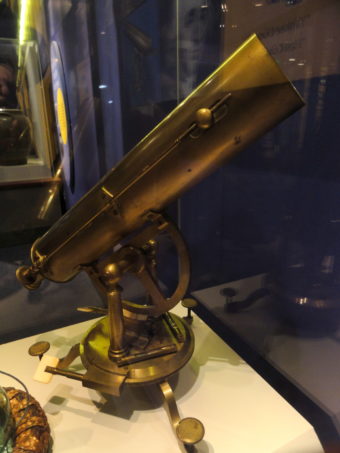 My Kingdom for an Accurate Map
My Kingdom for an Accurate Map
In what is generally considered the first state-supported scientific expedition by the newly formed United States, in 1780, during the height of the American Revolutionary War, a team of Americans led by Harvard mathematics professor Samuel Williams were seeking to travel to Penobscot Bay in Maine to observe an anticipated solar eclipse set to occur on October 27th.
The problem was that this was in British occupied territory. To get around the issue, Williams was able to bend the ear of none other than John Hancock who appealed to the commander of the British forces garrisoned in Maine on his behalf. In a letter sent to the colonel in question, Hancock stated,
Though we are political enemies, yet with regard to Science it is presumable we shall not dissent from the practice of all civilized people in promoting it.
Colonel Campbell ultimately granted Williams’ team limited access to the area requested, most notably they were not to set foot on the mainland (instead choosing to setup their equipment on Long Island). And so it was that after setting up five telescopes, several clocks, and other such equipment, Williams and his team eagerly awaited the event.
Unfortunately, Williams miscalculated the eclipse’s “path of totality” and they only saw a partial eclipse.
While it’s commonly stated today that this was because Williams, a mathematician, hadn’t done his math correctly, Williams himself noted it was actually simply because his map was incorrect, stating, “The longitude of our place of observation agrees very well with what we had supposed in our calculations. But the latitude is near half a degree less than what the maps of that country had led us to expect.”
The result was that the path of totality occurred about 30 miles away from where Williams had anticipated.
It all turned out OK though. Beyond a group of British astronomers who had correctly picked a location that was in the path of totality sending Williams their data, presumably with some level of smug satisfaction, Williams and his team saw enough to be able to make several scientific observations of note. This included being among the first to document that during a portion of the eclipse, the sunlight visible at the edges of the moon was “broken or separated into drops.”
This phenomenon is caused by the sunlight shining through depressions on the moon in some places but being blocked by higher elevation points in others.
About a half century later, this phenomenon would become known as “Bailey’s Beads,” when British astronomer Francis Bailey noted the same thing after observing an eclipse on May 15, 1836. Bailey also offered a correct explanation as to what caused these “beads” of light.
They should not, however, have been called “Bailey’s” or even “Williams’ Beads.” You see, Edmond Halley, more popularly remembered today for the comet that bears his name, had not only observed them (as presumably had many before even if they hadn’t documented it in a form that has survived to today), but more importantly correctly identified the cause all the way back in 1715, noting,
About two Minutes before the Total Immersion, the remaining part of the Sun was reduced to a very fine Horn, whose Extremeties seemed to lose their Acuteness, and to become round like Stars … which Appearance could proceed from no other Cause but the Inequalities of the Moon’s Surface, there being some elevated parts thereof near the Moon’s Southern Pole, by whose Interposition part of that exceedingly fine Filament of Light was intercepted.
In the end, of William’s partially failed expedition, Lars D.H. Hedbor of the Journal of the American Revolution noted, “It is remarkable to learn that even in the midst of the armed struggle, scientific advancement was considered by both sides important enough to take priority over the more ephemeral concerns of politics and military supremacy… Even as the course of history was being decided on the battlefields, this history of ideas and knowledge continued to unfold, only occasionally being hindered by mundane events.”
If you liked this article, you might also enjoy our new popular podcast, The BrainFood Show (iTunes, Spotify, Google Play Music, Feed), as well as:
- What is the Difference Between BCE/CE and BC/AD, and Who Came Up with These Systems?
- The Man Who Accurately Estimated the Circumference of the Earth Over 2,000 Years Ago
- The Curious Case of Sun Sneezing
- What Causes “Eye Floaters”
- The True Story of the Ides of March
Bonus Fact:
- The sun is actually white, not yellow. The reason it looks yellow to us on Earth is that our atmosphere scatters light from the sun; so the apparent color of it changes. This same scattering effect is why the sky looks blue in the day time instead of black, like at night. Specifically, what is going on here is the Earth’s atmosphere scatters light in the blue and violet wavelength range, so the remaining wavelengths of light appear yellow. This same effect is why the sky will also often appear yellow when the sun is disappearing over the horizon, as well as why the sky/sun can appear more red at times during this phase of the day. As the sun is setting, more of the shorter wavelength blue is being scattered because of the decreased angle of the sun relative to you; thus the light has to pass through more atmosphere to get to you. This increased diffusion results in less of the blue wavelength being visible to you and thus what remains appears yellow. Similarly, if it is dusty or there are a lot of other larger particles in the air, this will filter out larger wavelengths, resulting in a red sky and red sun. If you were to view the sun from space, however, (and wouldn’t burn out your retina doing it) it would appear white in the human visible spectrum.
- Two Brides for Apollo
- Where Did the 1780 Eclipse Go?
- The Celestial Phenomenon That Changed the Course of History
- Francis Baily
- History of Islesbourough
- Samuel Williams and the Eclipse
- Total Eclipses Don’t Always Go as Planned
- Samuel Williams
- Bailey’s Beads
- Nat Turner
- Turner’s Rebellion
- Eruption of Mount St. Helens
- Eruption of Mount St. Helens
- An Uprising
- Can a Solar Eclipse Really Blind You
- The Blind Astronomer
- Photophobia
- The Sun is Not a Mass of Incandescent Gas
- The Sun is a Miasma of Incandescent Plasma
- Eye Injuries of Early Solar Observers
- The Sun Never Sets on the British Empire
- Sunset on the British Empire
- The Empire on Which the Sun Never Sets
- Randall Munroe
- Racing the Moon
- The Concorde and the Longest Solar Eclipse
- Eclipse Flight of Concord 001
- Solar Eclipse of a Lifetime
- The Battle of the Eclipse
- Battle of the Eclipse
- The Solar Eclipse That Ended a War
- Eclipse of Thales
- Thales of Miletus
- Battle of the Eclipse
- Thales of Miletus
- Thales
- Thales
- Saros
- That Time Columbus Used His Knowledge of a Lunar Eclipse to Get Supplies
- How a Total Lunar Eclipse Saved Columbus
- The Eclipse That Saved Columbus
- The Celestial Phenomenon That Changes History
- March 1504 Lunar Eclipse
- Image Source
- Telescope
| Share the Knowledge! |
|


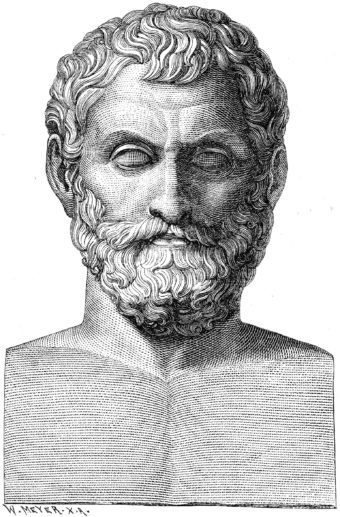
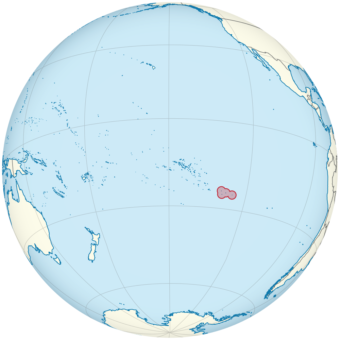
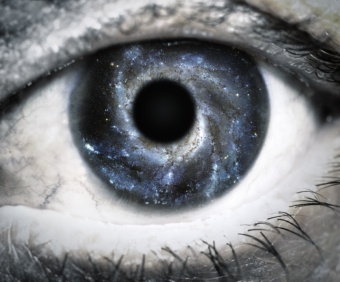
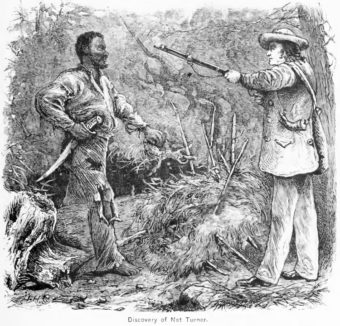




“Sahara dessert”. Yum!